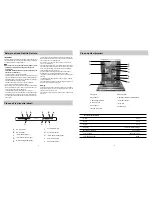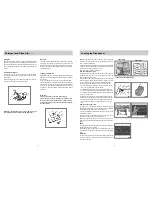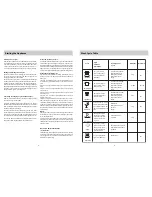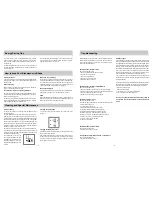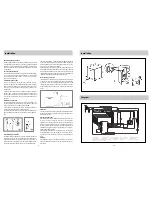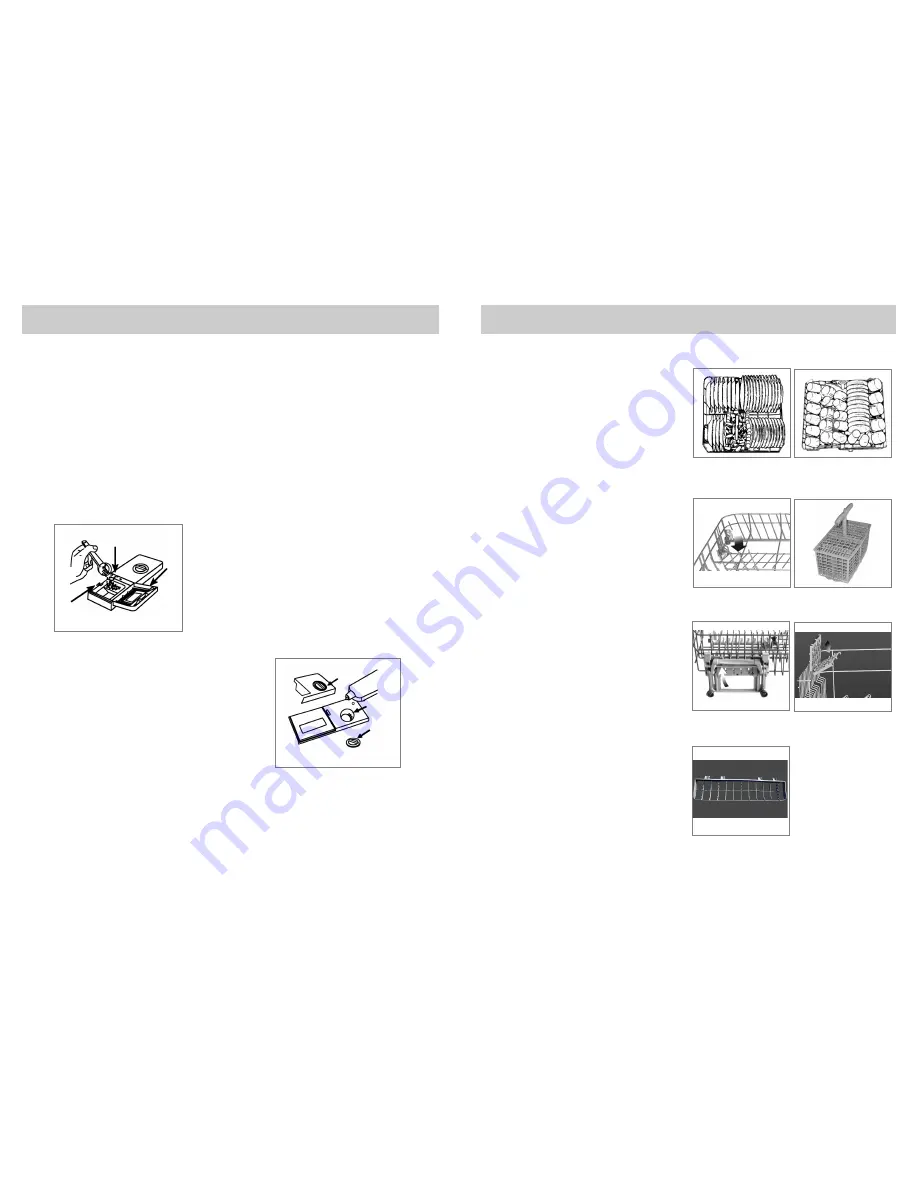
.3.
.4.
Detergent and Rinse Aid
Detergent
Detergent specifically intended for use with dishwashers must
be used. The dispenser must be refilled before the start of each
wash cycle following the instructions provided in the "Wash Cycle
Table". The detergent dispenser is located on the inside panel of
the door.
Loading the detergent
To open the "A" cover on the dispenser, press the "B" button.
The detergent for the wash cycle should be poured into the "C"
compartment.
After the detergent has been placed in the dispenser, close the
cover and press down until it clicks into place.
Notice: To enable the cover to close, remove any ex-
cess detergent from the edges of the dispenser.
Rinse Aid
This product makes dishes sparkle and helps them to dry with-
out spotting. The dispenser is located on the inside panel of the
door and should be filled after approx every 80 wash cycles (or
when the "low rinse aid" indicator light comes on for those mod-
els with this feature).
Loading the Rinse Aid
Regardless of the type of detergent dispenser installed on your
appliance, you must proceed as indicated below when loading
the rinse aid.
To open the dispenser, turn the "C" cap in an anti-clockwise
direction and then pour in the rinse aid, making sure not to overfill.
The amount of rinse aid used for each cycle can be regulated by
turning the "F" dose adjustor, located beneath the "C" cap, with
a screwdriver. There are 6 different settings; the normal dosage
setting is 3.
Important
Proper dosage of the rinse aid improves drying.
If drops of water remain on the dishes or spotting occurs,
the dosage adjustor should be turned to a higher setting.
If the dishes have white streaks, turn the dosage adjustor
to a lower setting.
C
B
A
C
C
F
Loading the Dishwasher
Before placing the dishes in the dishwasher, remove larger food
particles to prevent the filter from becoming clogged, which re-
sults in reduced performance.
If the pots and pans have baked-on food that is extremely hard to
remove, we recommend that they are soaked before washed. This
will eliminate the need for extra wash cycles.
Pull out the rack to load the dishwasher.
How to use the lower rack
We recommend that you place the most difficult to clean items on
the bottom rack: pots, pans, lids, serving dishes and bowls, as
shown in the figure to the right.
It is preferable to place serving dishes and lids on the sides of the
racks in order to avoid blocking the rotation of the top spray arm.
- Pots, serving bowls, etc. must always be placed face down.
- Deep pots should be slanted to allow the water to flow out.
- The lower rack features fold down tine rows (see fig.A) so that
larger or more pots and pans can be loaded.
- The silverware basket can be halved (see fig.B) so that only
one section may be used when the silverware load is light. This
also makes space for additional pots and pans and it can also be
placed in the upper rack.
- Silverware should be placed in the silverware basket with the
handles at the bottom; if the rack has side baskets, the spoons
should be located individually into the appropriate slots. Long
utensils should be placed in a horizontal position in the upper
rack.
How to use the upper rack
The upper rack is designed to hold more delicate and lighter
dishware, such as glasses, cups and saucers, plates, small bowls
and shallow pans (as long as they are not too dirty).
- Position the dishes and cookware so that they do not get moved
by the spray of water.
The upper rack can be adjusted for height by using the knobs lo-
cated on both sides of the rack itself (see fig.C).
Adjust the upper basket to the higher level and you have more
space to accommodate those taller pans and trays in the bottom
basket.
Shelf
Lean tall glasses and those with long stems against the shelf-not
against other items to be washed.
Place glasses, cups and small bowls on the additional cup rack.
The additional cup rack can be swivelled in or out as required(see
fig.D).
Knife rack
The knife rack clips onto the side of the top basket, giving you the
freedom to wash your large sharp knives separately and out of
harm’s way (see fig.E).
Lower Rack
Upper Rack
Load for 12 Standard Settings
fig.A
fig.C
fig.D
fig.E
fig.B


